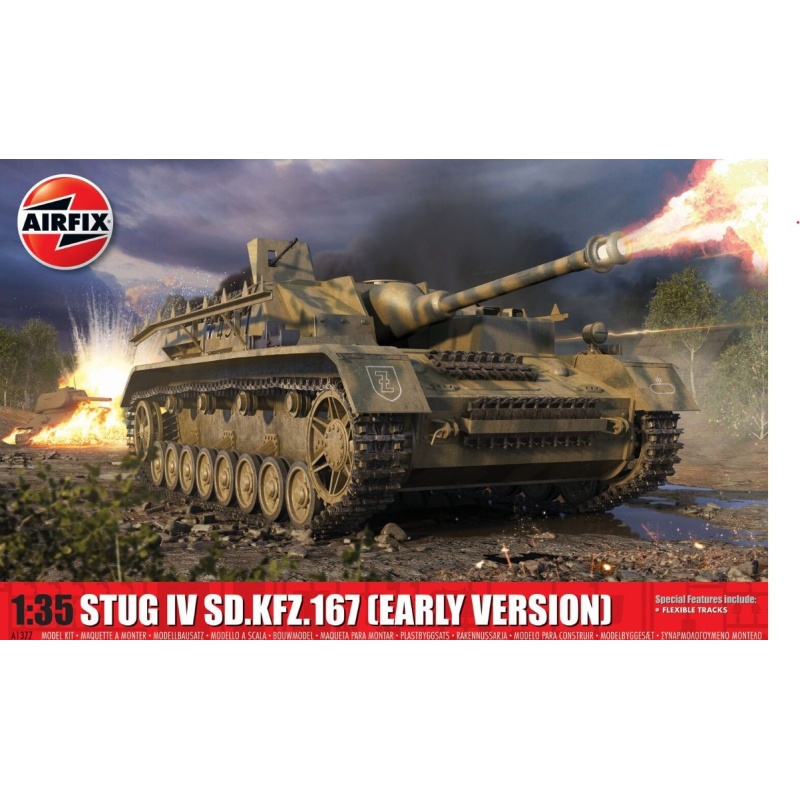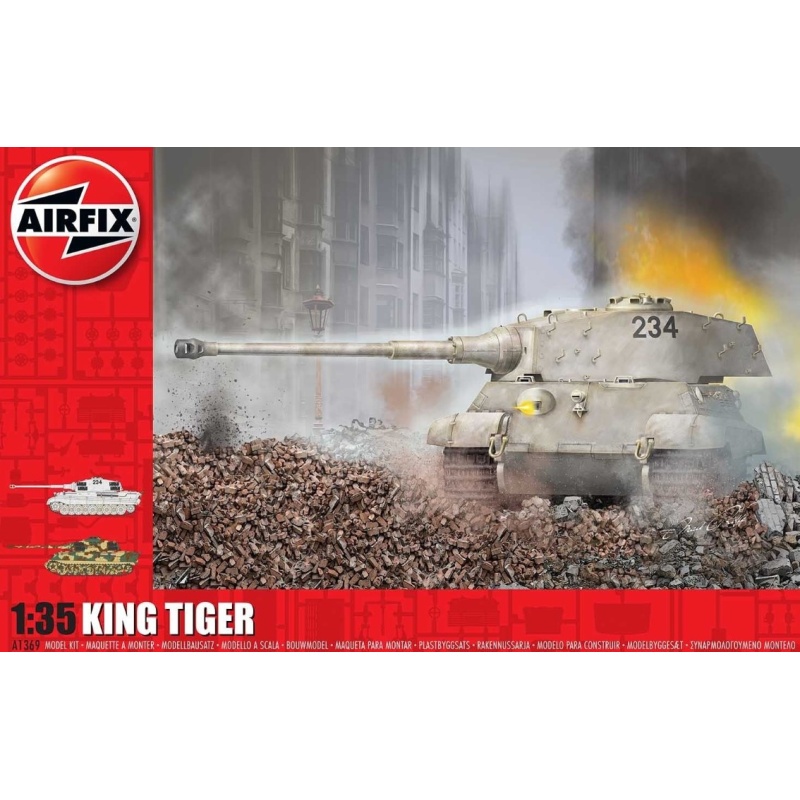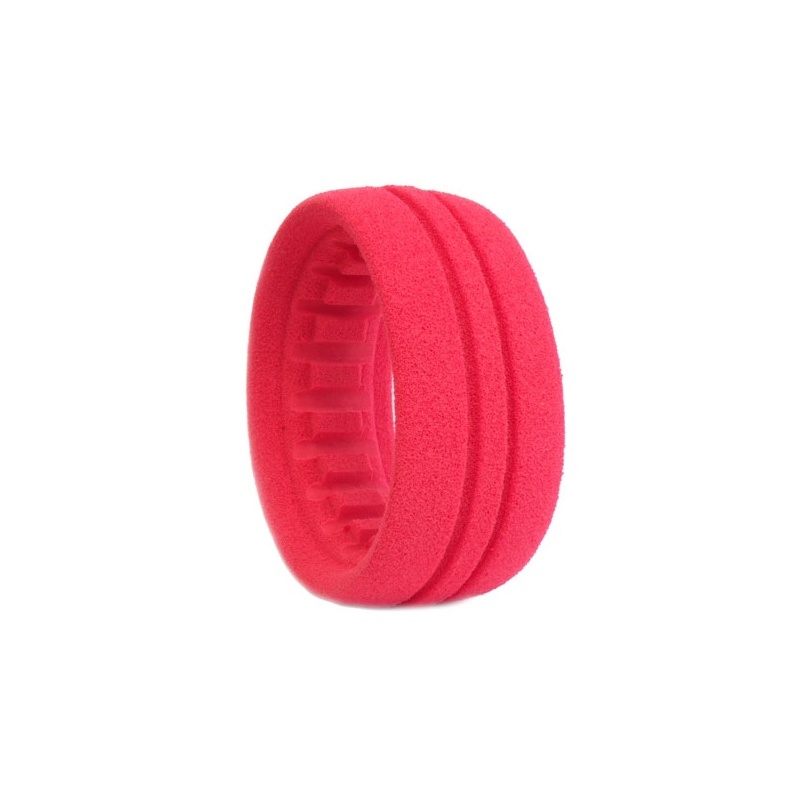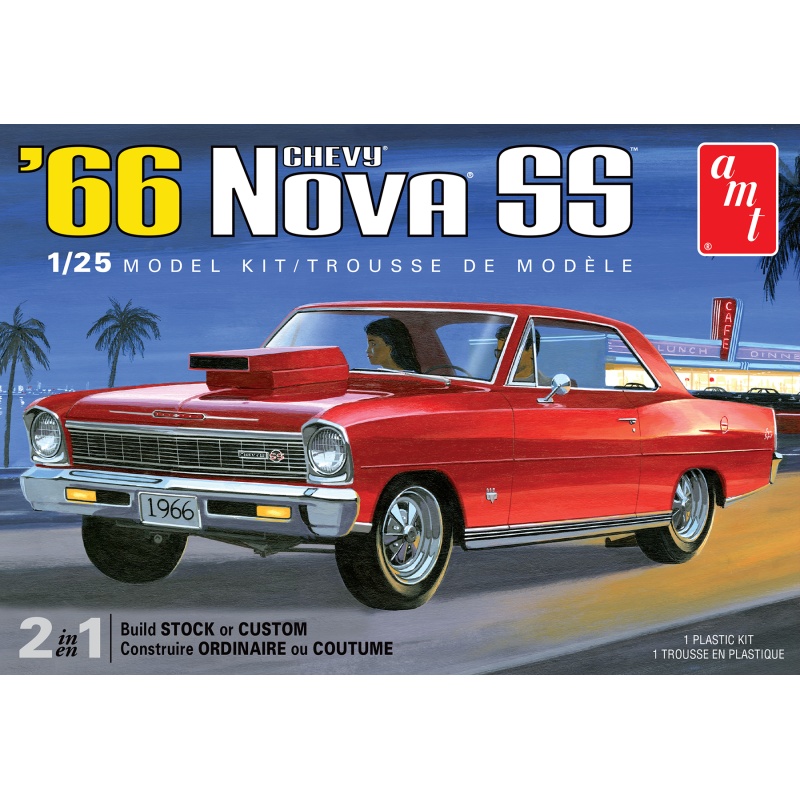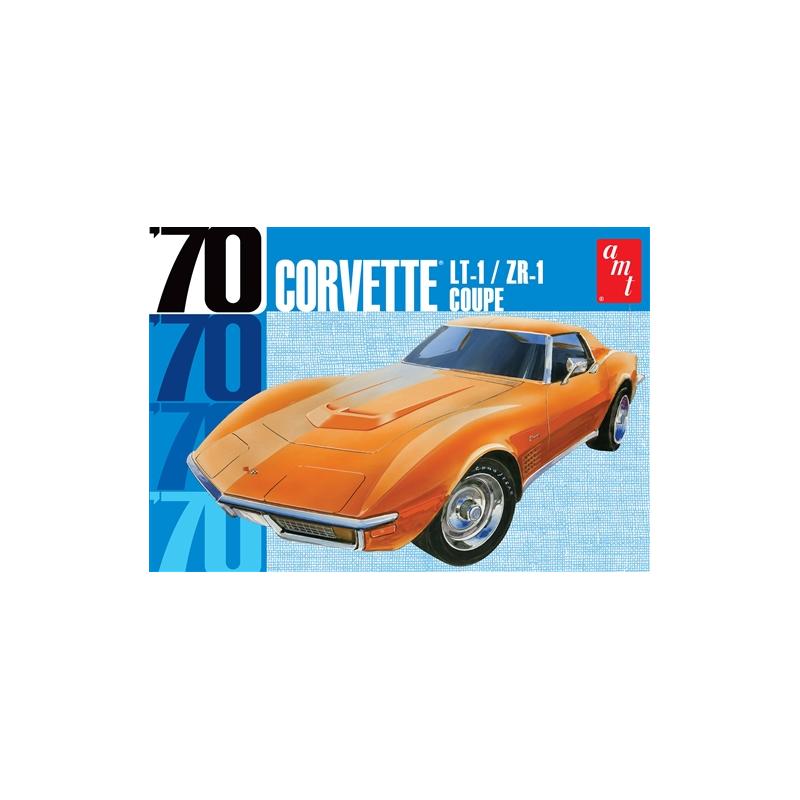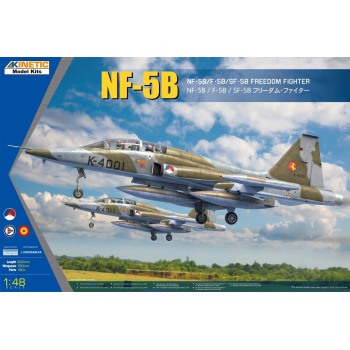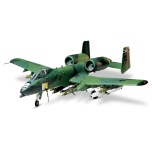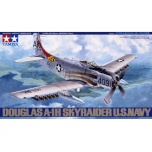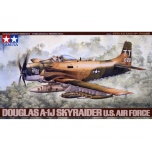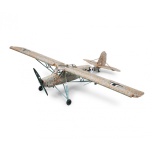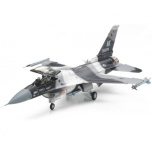Kinetic NF-5B Freedom Fighter II 1:48
The F-5 is a legendary fighter plane designed and built by the American company Northrop, which in the 1960s was the only manufacturer of combat aircraft to offer a light and cheap fighter. The F-5 was produced in two versions; single-seat, fighter designated F-5A and two-seat, training and combat F-5B. The F-5 was much smaller than modern fighters weighed about a third of the weight of the popular F-4 Phantom. It owed such a small size to the engines used in it. Northrop's designers saw early progress in the development of small turbojet engines that were built for guided missiles and unmanned aerial vehicles. They found these engines to have a favorable thrust-to-weight ratio, and because they were also relatively small, they could be used in a twin-engine airplane, thus ensuring greater propulsion reliability. The plane did not have complicated avionics and electronics, so preparation for the mission and inspections did not require a lot of work. As a result, the combat readiness factor of units armed with these machines was very high, especially in comparison with other supersonic planes from that period. The F-5 had relatively simple equipment, which limited its combat capabilities, but nevertheless the machine was a reasonable compromise between price and value. It provided the aviation of poor countries with considerable defensive and offensive potential. Northrop's designers tried to build the smallest fighter possible. The F-5A was armed with two 20mm M39A-2 cannons mounted in the nose of the machine, and the ammunition supply was 280 rounds per gun. The procedures for accessing, maintaining and replenishing ammunition did not cause any problems, as were other maintenance activities. All the teams were within the reach of the armorer standing on the ground. It was similarly simple to adjust the setting of the cannons so that their series converged at a specific point in front of the machine. Basic tools were enough to do this. The theoretical rate of fire of the cannons was 1500 rounds per minute. Even a short burst of this weapon could have devastating effects. The wingtips are designed to hang the Sidewinder missiles, a formidable air-to-air weapon. The F-5 is stable and has good piloting properties, so you get great accuracy when firing cannons. Unlike the F-5A, the two-seater version of the Freedom Fighter F-5B was not armed with cannons, but like the single-seater version, it had seven suspension knots for various weapons and additional fuel tanks. The F-5 has proven itself many times in attacks against ground targets, it was maneuverable both at low and high speeds, had good visibility from the cabin, was very stable. When the F-5 entered service in 1964, it was immediately successful: 85 percent. The combat competitions held at that time resulted in the success of this little fighter. In January 1971, due to the modifications made, the F-5A / B was renamed the F-5E, better known as the Tiger II. Two years later, the two-seater version of the Tiger II also appeared, designated the F-5F. In the E / F version, this plane is used as an introductory plane, after which the pilots change to the F-18. Since 1994, Northrop Grumman and USAAF have been cooperating intensively to further upgrade the airframe, avionics and cockpit of the F-5E / F. As a result, Northrop Grumman is prepared for the modernization of F-5A / B aircraft in the next four stages or immediately to the highest standard known as Tiger IV. The improvements concern equipping the aircraft with a multi-range radar (e.g. APG-66), combat mission computer, multifunctional imaging systems in the cabin, HUD, navigation system, on-board oxygen generation installation, ejection seat, weapons management system, modern flight control systems, as well as replacements airframe elements made of lighter or stronger materials. The F-5 also offers elements such as combat mission software borrowed from the F-20, more powerful engines. You can even order a wing replacement, making it possible to hang Maverick missiles. There are and will be many more possibilities for modernization, because Northrop / Grumman engineers are constantly working on it. So it's no surprise that the F-5 is one of the most successful export products in the history of the US aerospace industry. Technical data (for the F-5A version): Maximum speed: 1.4 Ma, rate of climb: 146 m / s, practical ceiling: 15550 m, maximum range: 2520 km, armament: two 20mm M39A-2 cannons, Suspended - up to 2,800 kg of bombs and rockets.

